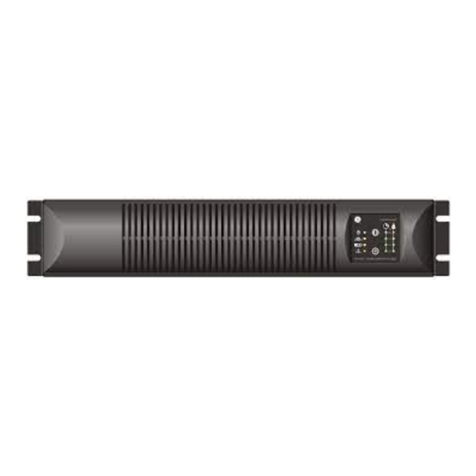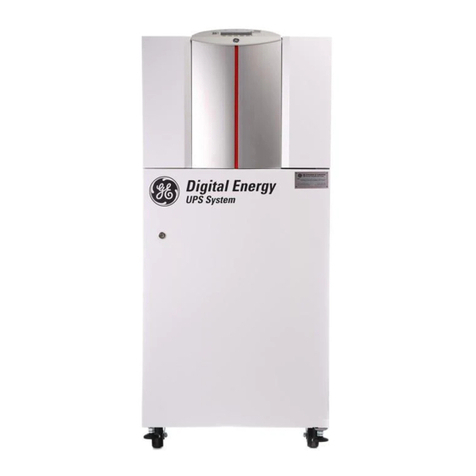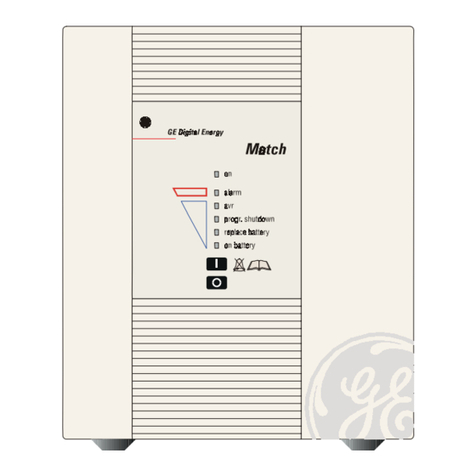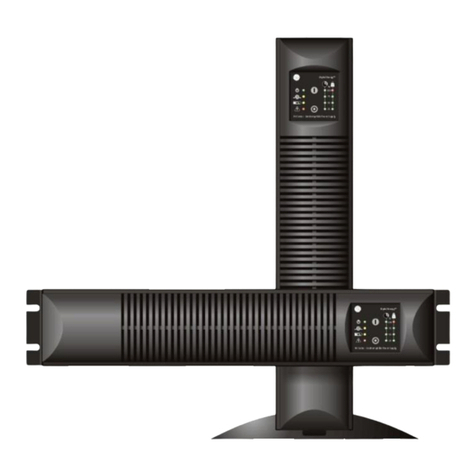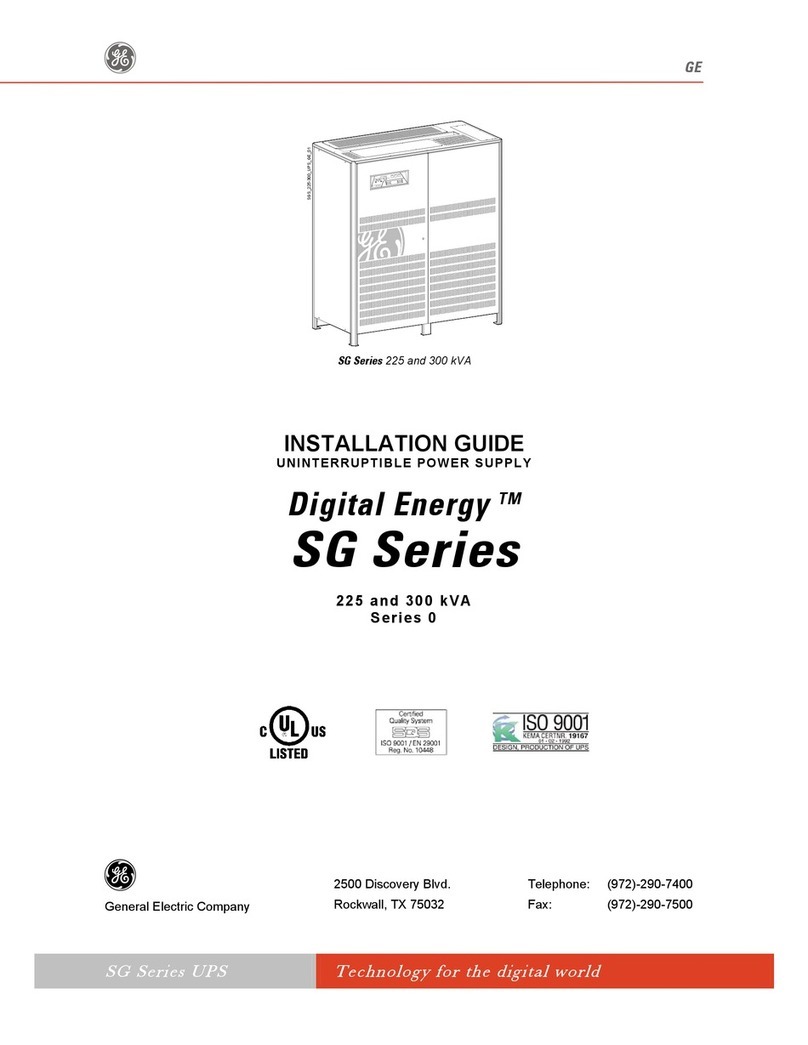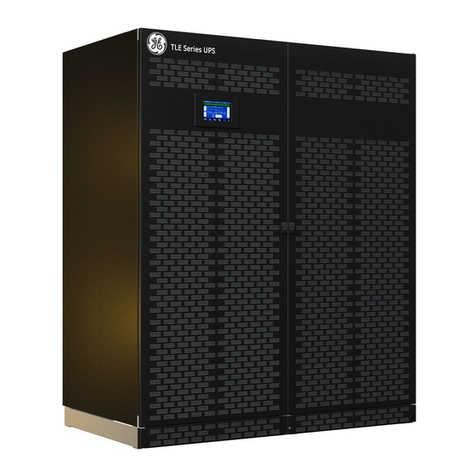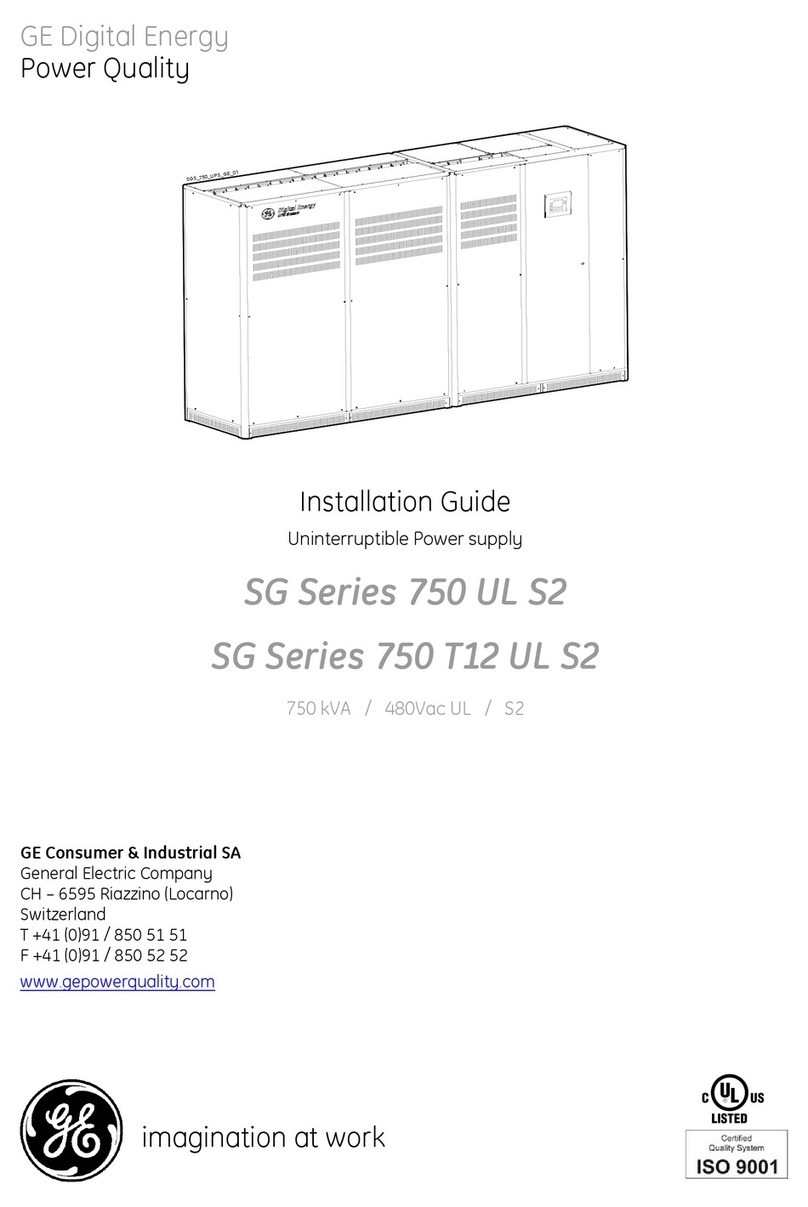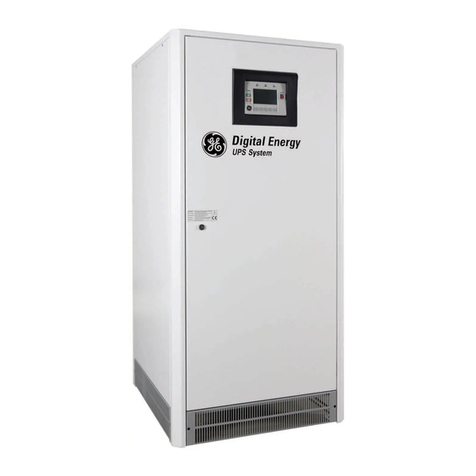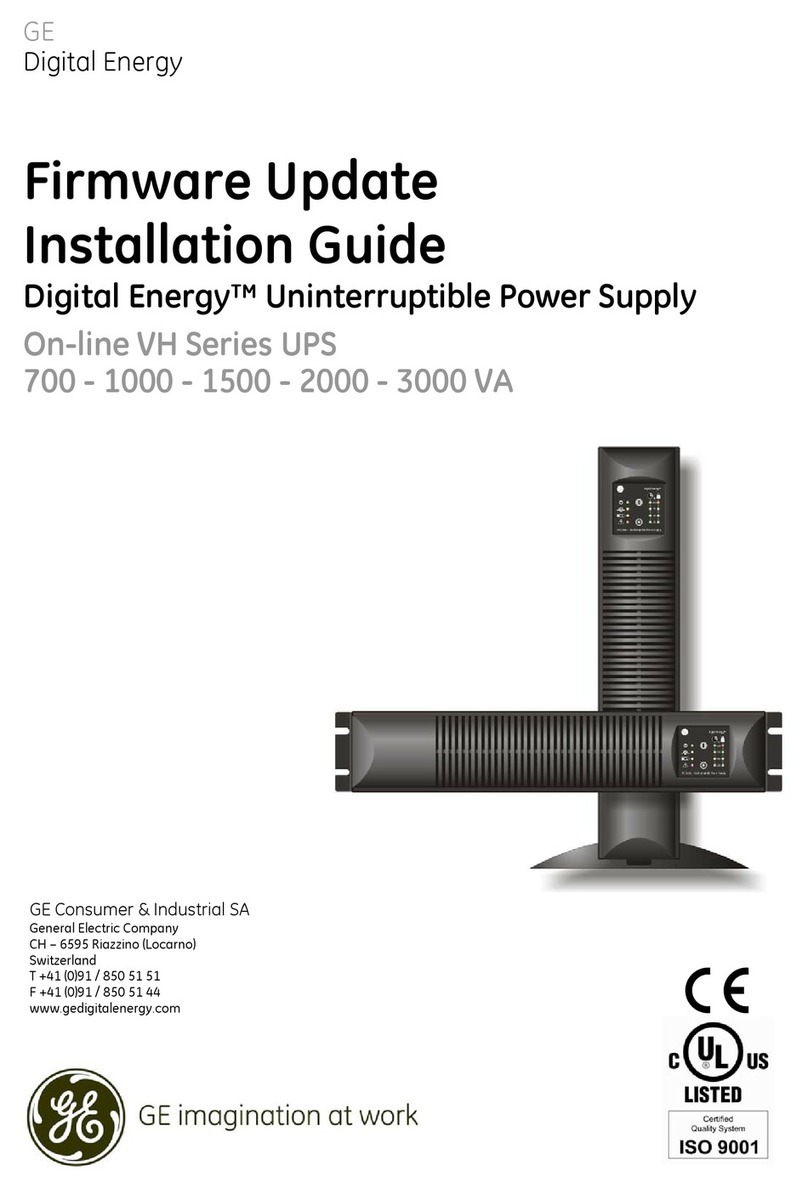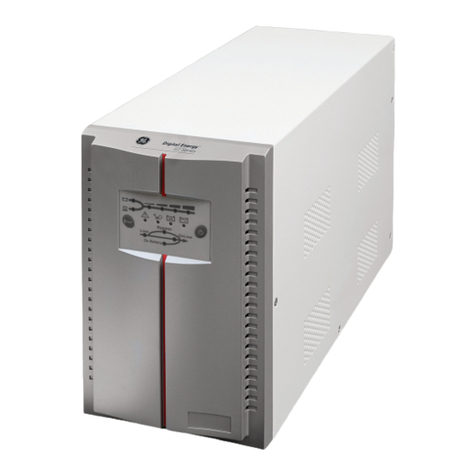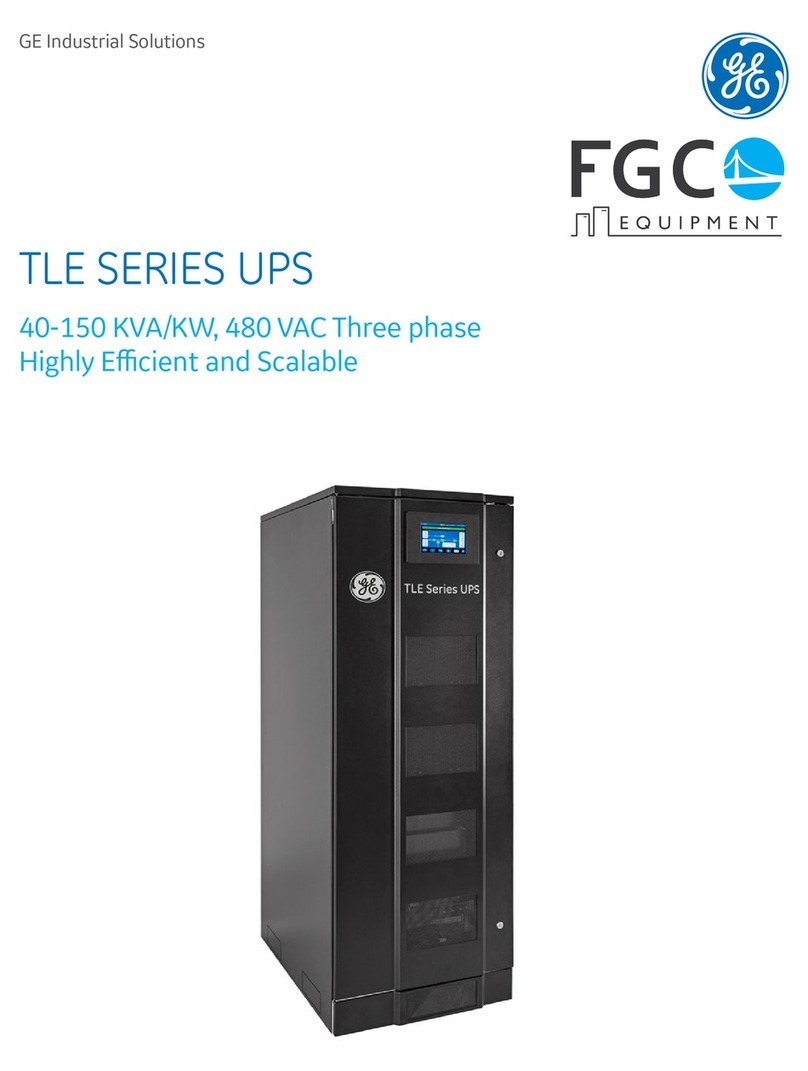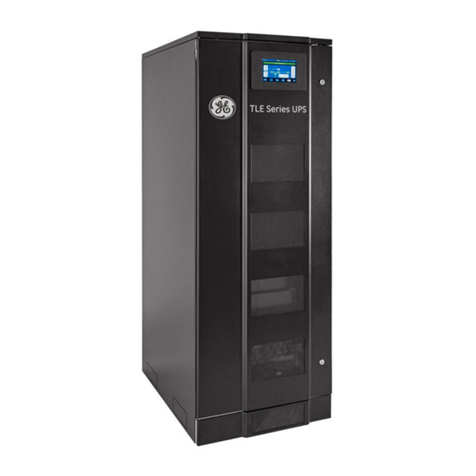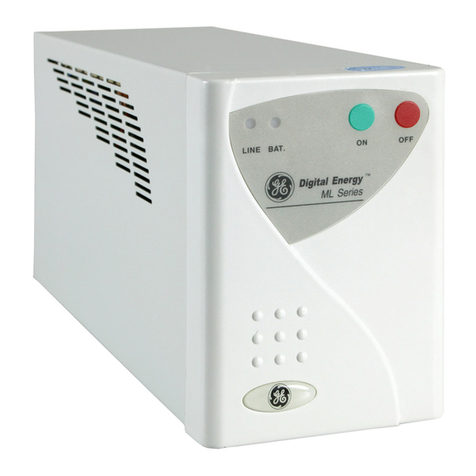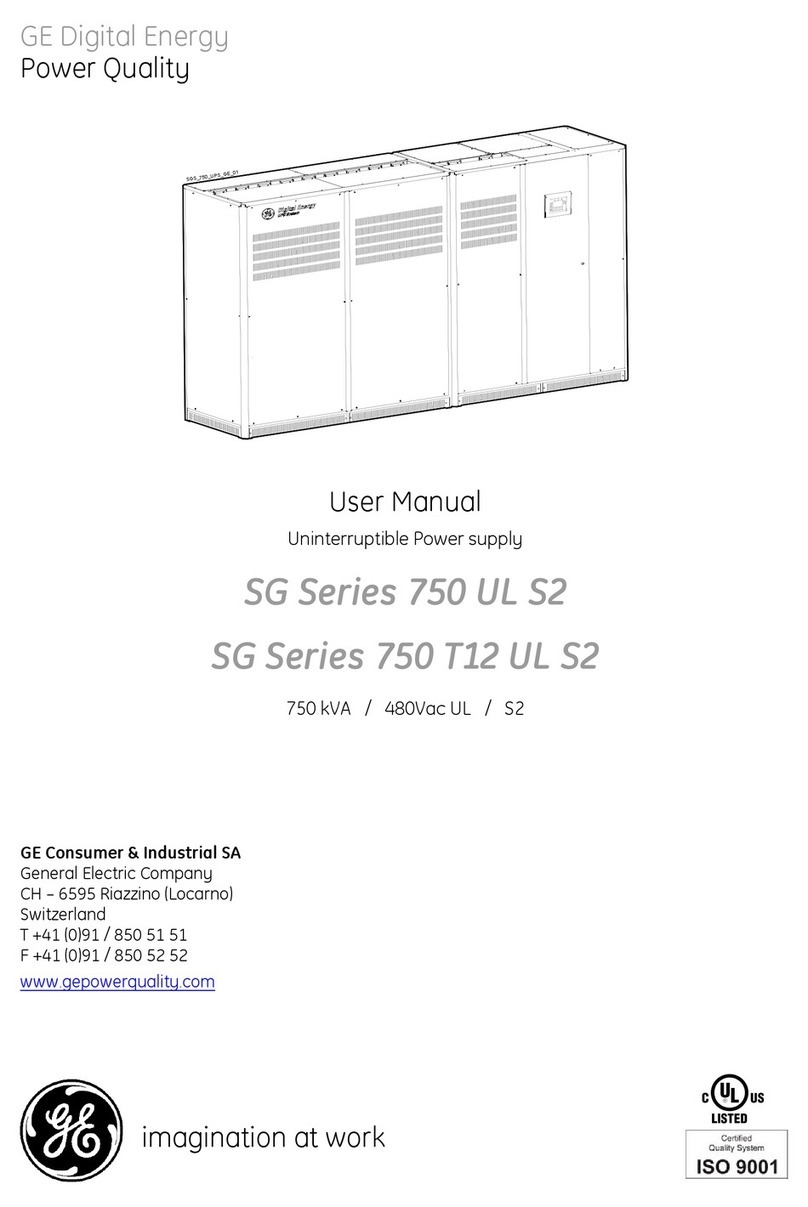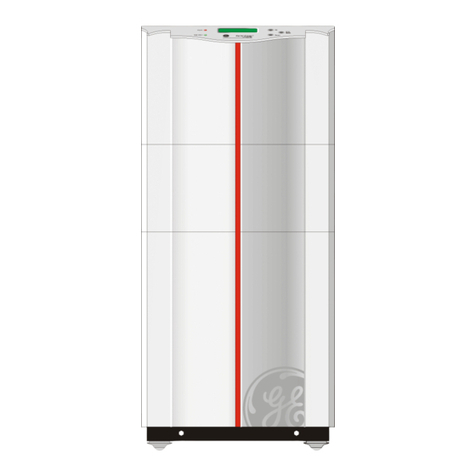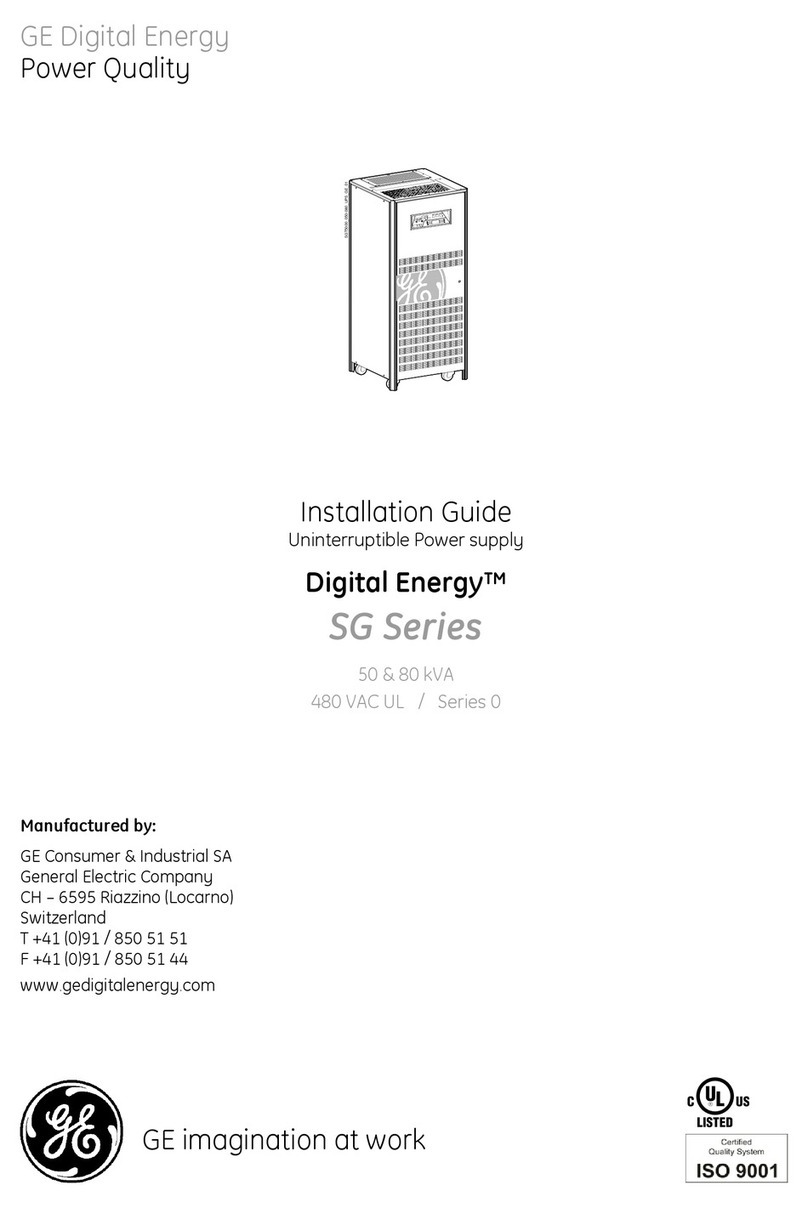1 - Important Safety Instructions
1.1 Save these instructions
This manual contains important instructions that should be followed during installation and maintenance
of the UPS. It also gives all necessary information about the correct use of the UPS.
Full understanding and compliance of the safety instructions and warnings contained in this manual are
the ONLY CONDITION to avoid any dangerous situation during installation, operation and
maintenance work, and to preserve the maximum reliability of the UPS system.
GE refuses any responsibility in case of non-observance, unauthorized alterations or improper use of
the delivered UPS.
Before attempting to install and start up the UPS, carefully read this manual. Keep this manual next to
the UPS for future references. All servicing must be done by qualified personnel. Do not attempt to
service the UPS unless you have had proper training.
CAUTION: By opening or removing covers you run the risk of exposure to dangerous voltages!
While every care has been taken to ensure the completeness and accuracy of this manual, GE
accepts no responsibility or liability for any loss or damage resulting from the use of the information
contained in this document.
This document shall not be copied nor reproduced without the permission of GE.
Due to technical improvements, some of the information contained in this manual may be changed
without notice.
1.2 General
•CAUTION: RISK OF ELECTRIC SHOCK Do not remove the cover, there are no user serviceable parts
inside. All maintenance and service work should be performed by qualified service personnel.
•The UPS contains batteries. The output terminals may be electrically live, even when the UPS is
disconnected from the utility supply. Dangerous voltages may be present during battery operation. The
batteries must be disconnected during maintenance or service work.
•The UPS contains potentially hazardous voltages.
WARNING: This is a Class A-UPS product. In a domestic environment this product may cause radio
interference, in which case the user may be required to take additional measures.
1.3 Installation
•Move the UPS in an upright position and in its original package to the final destination room.
•To lift the UPS, use a forklift or lifting belts with spreader bars.
•Check for sufficient floor and elevator loading capacity.
•Check carefully the integrity of the UPS equipment. In case you note some visible damage, do not
connect any voltage to the UPS but contact the nearest Service Centre.
•This UPS is intended to be used in a controlled indoor environment and free of conductive
contaminants and protected against animal intrusion.
•The UPS should only be powered from a single phase, three wire AC source equipped with an earth
connection.
•Do not install the UPS in an excessively humid environment or near water.
•Avoid spilling liquids or dropping any foreign object into the UPS.
•The unit must be placed in a sufficiently ventilated area; the ambient temperature should not exceed
40°C. Optimal battery lifetime is obtained if the ambient temperature does not exceed 30°C.
•It is important that the unit has adequate ventilation. Maintain air movement around and through the
unit. Do not block the air vents.
•Avoid placing the unit in direct sunlight or near heat sources.
•Do not plug household appliances such as electric heaters, toasters or vacuum cleaners into the UPS.
The UPS output is intended to be used only for electronic loads such as computers and
telecommunications equipment.
OPM_LPE_11X_3K0_10K_1GB_V041 3GE DE LP 11 UPS: User manual 4.1 (GB)
